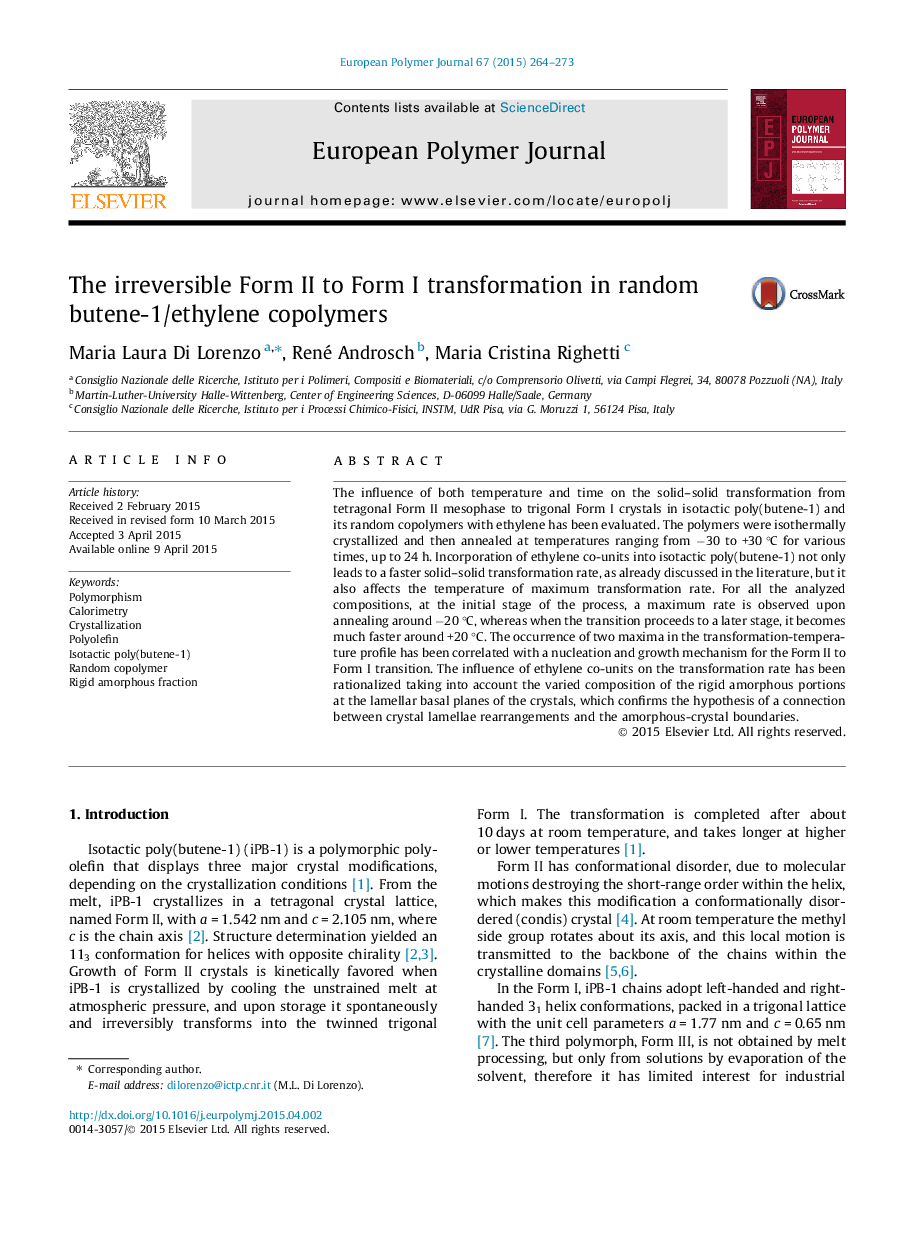| Article ID | Journal | Published Year | Pages | File Type |
|---|---|---|---|---|
| 1400448 | European Polymer Journal | 2015 | 10 Pages |
•Transition kinetics from Form II to Form I in butene-1/ethylene copolymers was evaluated.•Copolymerization with ethylene leads to a faster solid–solid transformation rate.•Copolymerization with ethylene affects the temperature of maximum transformation rate.•A dual transition kinetics was observed for all the analyzed grades.•A nucleation and growth mechanism for the solid–solid transformation was proposed.
The influence of both temperature and time on the solid–solid transformation from tetragonal Form II mesophase to trigonal Form I crystals in isotactic poly(butene-1) and its random copolymers with ethylene has been evaluated. The polymers were isothermally crystallized and then annealed at temperatures ranging from −30 to +30 °C for various times, up to 24 h. Incorporation of ethylene co-units into isotactic poly(butene-1) not only leads to a faster solid–solid transformation rate, as already discussed in the literature, but it also affects the temperature of maximum transformation rate. For all the analyzed compositions, at the initial stage of the process, a maximum rate is observed upon annealing around −20 °C, whereas when the transition proceeds to a later stage, it becomes much faster around +20 °C. The occurrence of two maxima in the transformation-temperature profile has been correlated with a nucleation and growth mechanism for the Form II to Form I transition. The influence of ethylene co-units on the transformation rate has been rationalized taking into account the varied composition of the rigid amorphous portions at the lamellar basal planes of the crystals, which confirms the hypothesis of a connection between crystal lamellae rearrangements and the amorphous-crystal boundaries.
Graphical abstractFigure optionsDownload full-size imageDownload as PowerPoint slide
